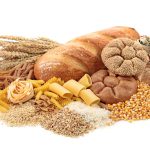Imagine a bustling metropolis. Sky rise buildings, with well built roads. People everywhere: walking, talking, driving, being driven, working, shopping, and doing all the other things you expect to be done in a metropolis. But mainly people. Hundreds of thousands of them, even millions. People who carry the metropolis forward.
Similarly, our gastrointestinal system is full of millions of people, called gut bacteria (also called gut microbes). They work hard to digest food and produce chemicals which improve body health. But just like how some people in a metropolis contribute to traffic jams and pollution/litter, some gut bacteria can harm if they get too close to the walls of the intestine. They can cause the traffic jam of constipation. They can damage the intestinal cells, via a process called inflammation. This inflammation not only damages the digestive tract, but also causes harmful substances to enter the body and cause diseases, including infections.
In other words, the body needs these gut bacteria, but needs to keep them at a distance. Hence, the intestinal cells produce mucus, and these gut microbes sit atop a layer of mucus that lines the intestinal cells. Mucus protects the intestinal lining from the bacteria.
Unfortunately, the mucus layer is vulnerable to damage. How? Well, it turns out that when the gut microbes do not get their preferred food, they can themselves destroy this lining.
And what is “their preferred food” – or the food that these microbes “like”? Gut microbes love fibre, which are essentially carbohydrates in food that are not digested by our digestive enzymes, but which, on the other hand, provide a tasty meal to these microbes. A lack of fibre means that the hungry microbes would now prey on the intestinal wall and damage it. A fibre-rich diet, however, means that these fibre-fed gut microbes continue to sit on a layer of mucus,doing their work. Gut bacteria also digest the fibres to produce substances like short chain fatty acids, which get absorbed and help in improving our health.
Fibre, found in plant-based foods such as vegetables and fruits, has other benefits too. Fibre protects against colorectal cancer, which is a malignancy of the intestines. Fibre absorbs water and adds bulk to the stools, thereby preventing constipation, the intestinal traffic jam. Fibre can even help prevent blood glucose spikes in people with diabetes. To add to all these benefits, fibre absorbs water and improves the feeling of fullness after a meal. Thus, high fibre diets can cause weight loss too. As a sudden increase in fibre intake may be associated with gas formation and bloating, if you wish to add more fibre to your diet, it is important to increase fibre intake gradually.
Fibre is just a small part of the larger array of benefits of a plant-based diet, and this issue of Diabetes Health focuses on vegetarianism in Diabetes. Apart from the benefits of vegetarianism on compassion towards animals and tackling climate change, there is increasing evidence that a predominantly plant-based diets could improve health and wellbeing. So read on dear reader. Read on, so that you may plant your feet firmly on the road to a healthy life!
Dr Unnikrishnan AG
Editor














